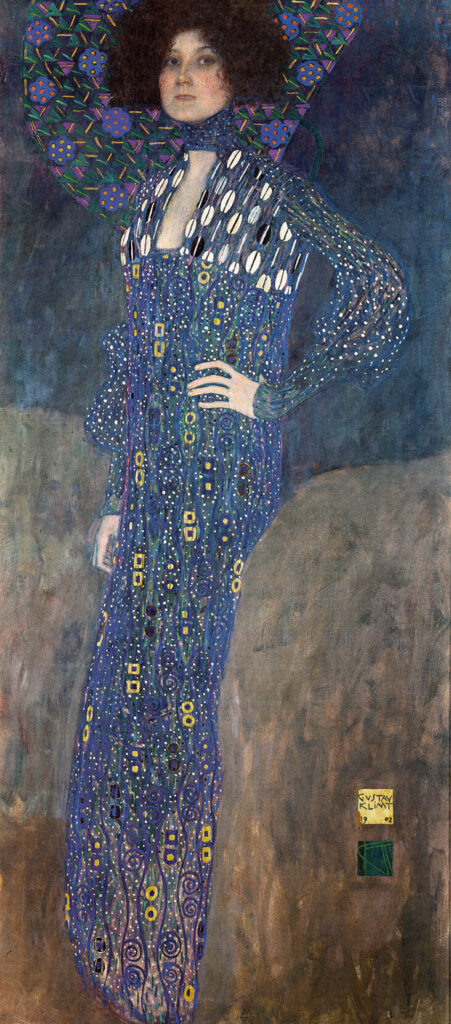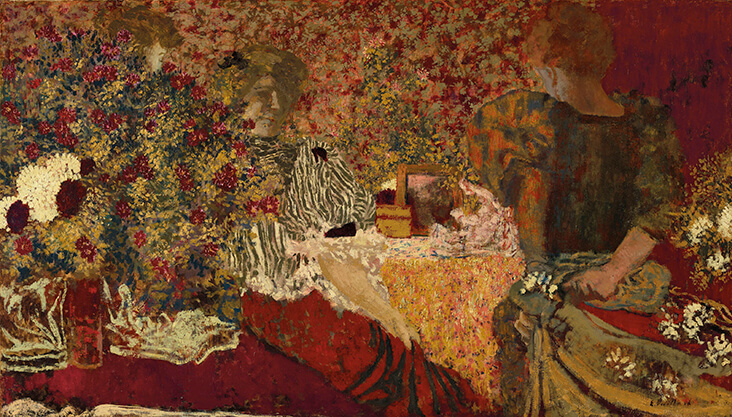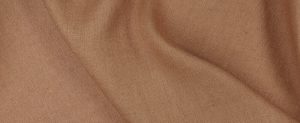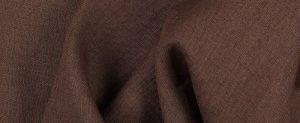Artists and Their Fabric: An Introduction
Fabric has played a vitally significant role in the lives of countless artists, acting as a source of inspiration, comfort and self-expression. In this new series, we will look at the world’s finest artists who built an intimate relationship with fabric – one brought about by family history, travel or personal interest – that would play an essential role in shaping their artistic practice. These are the artists who saw fabric as far more than a quiet, subdued backdrop, or drapery to clothe a model, placing it instead as the vital ingredient at the very core of their visionary practice.
Dutch 17th century Baroque painter Johannes Vermeer was born into a family of textile manufacturers; his father Reynier Vermeer was a silk weaver who became celebrated across Holland for a rich and glossy satin fabric called caffa, which blended silk with wool or cotton, and was commonly used for upholstery, clothing and curtains. Witnessing his father’s close relationship with such an exquisitely crafted, high-quality fabric must have shaped Vermeer’s attitude towards textiles, as they became a central tenet within his adult oeuvre. In paintings such as The Love Letter, 1669-1670, glossy, sensuous fabric which might well have been caffa dominate Vermeer’s art, while The Lacemaker 1669-1671 demonstrates the respect Vermeer had for the quiet, studious process of fabric production. One might even argue that the close, meditative attention needed to weave fabric chimed in with the quality of Vermeer’s art, which is so heavily focussed on the isolated, introspective world of his sitters.
The great Austrian Secessionist Gustav Klimt was fascinated by the expressive possibilities of textiles, designing his own elaborate fabrics and dresses throughout the early 20th century which featured swirling shapes, colours and patterns. They became the central, defining feature of his paintings, engulfing his figures in rapturous, glowing halos of light. Many of Klimt’s most famous paintings also feature daring, progressive clothing made by his partner Emilie Flöge, who modelled her fashions in works such as Portrait of Emilie Floge, 1902. One journalist of the time praised Klimt’s art for its ability to define: “the new Viennese woman … charmingly immoral, delightfully sinful, enchantingly perverse.”
French artist Edouard Vuillard lived and breathed fabric from an early age, raised in a Parisian apartment with his seamstress mother. Scraps of ornately decorated and intricately patterned pieces littered the home they shared together for decades, making their way intuitively into the artworks he would come to paint. Initially patterns were background drapes and home furnishings, but by his later career Vuillard had made fabric his primary subject, allowing it to dominate the entire canvas in kaleidoscopic displays of colour and light, moving beyond the material world into a metaphysical realm.
Of all the artists who drew on textiles for their art, French Fauvist painter Henri Matisse is perhaps the most famous and celebrated. He came from a family of weavers and grew up the area of Bohain, a district known for its colourful and experimental textile production – with no local galleries near him, Matisse has cited these textiles as his first real experience of visual art. Matisse began collecting fabrics for his “working library” from his early student years, gradually adding to it over the years while travelling throughout Morocco, Tahiti and Algeria, or visiting Parisian flea markets and haute couture end of season sales. These textiles became his gateway into the abstract properties of shape, pattern and line, and it was through emulating their decorative surfaces that Matisse was able to create his most revolutionary works of art.
For mid-20th century Mexican artist Frida Kahlo, the intense, vivid and exuberant fabrics that wove their way into her artworks were innately tied to her Mexican heritage, and as such became powerful signifiers of her identity, keeping her steady and anchored even throughout her most troubled and unstable times. Today Frida is as much recognised for her lavish and eccentric style as she is the artworks that made her famous, demonstrating just how closely intertwined textiles can be with our sense of self.









































4 Comments
Maureen Christensen
I love your articles Rosie, they are always so interesting and contain beautiful pictures for creative ideas.
Thank you!
Rosie Lesso
Thank you Maureen! I’ve really enjoyed looking into this series.
Myrna Seale
Fascinating article!
Rosie Lesso
Thank you Myrna!